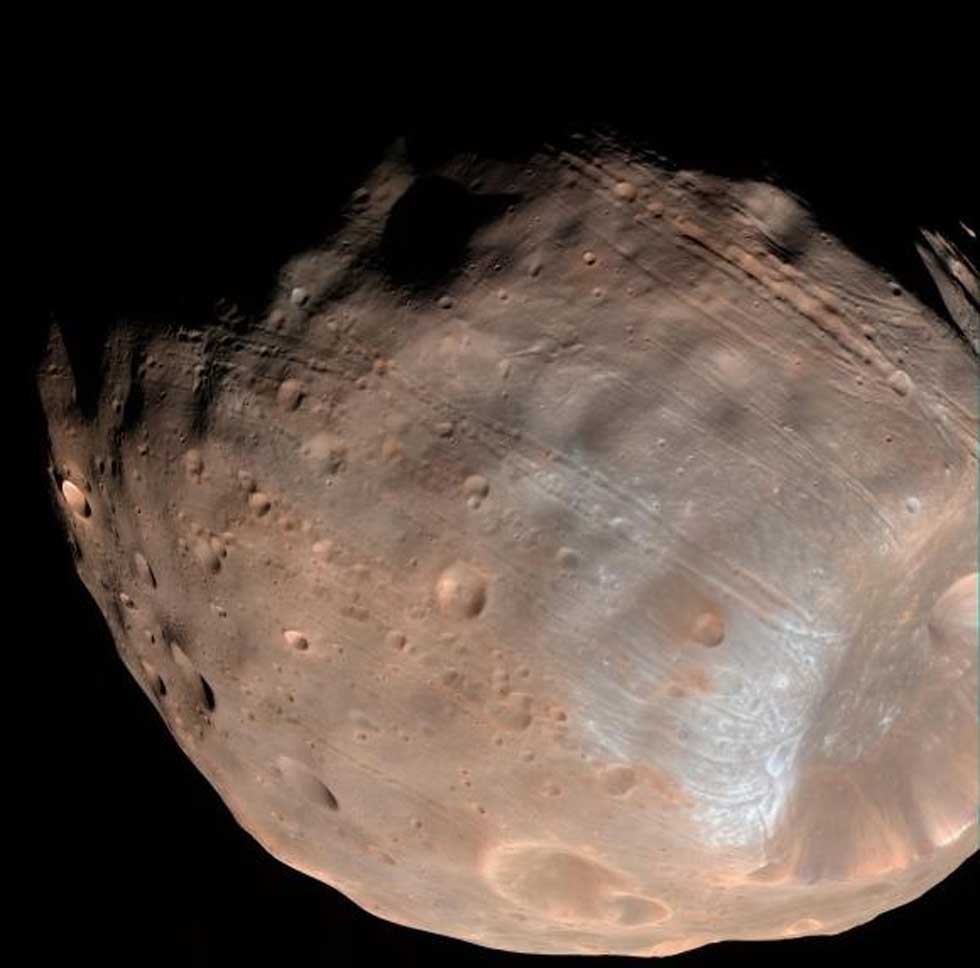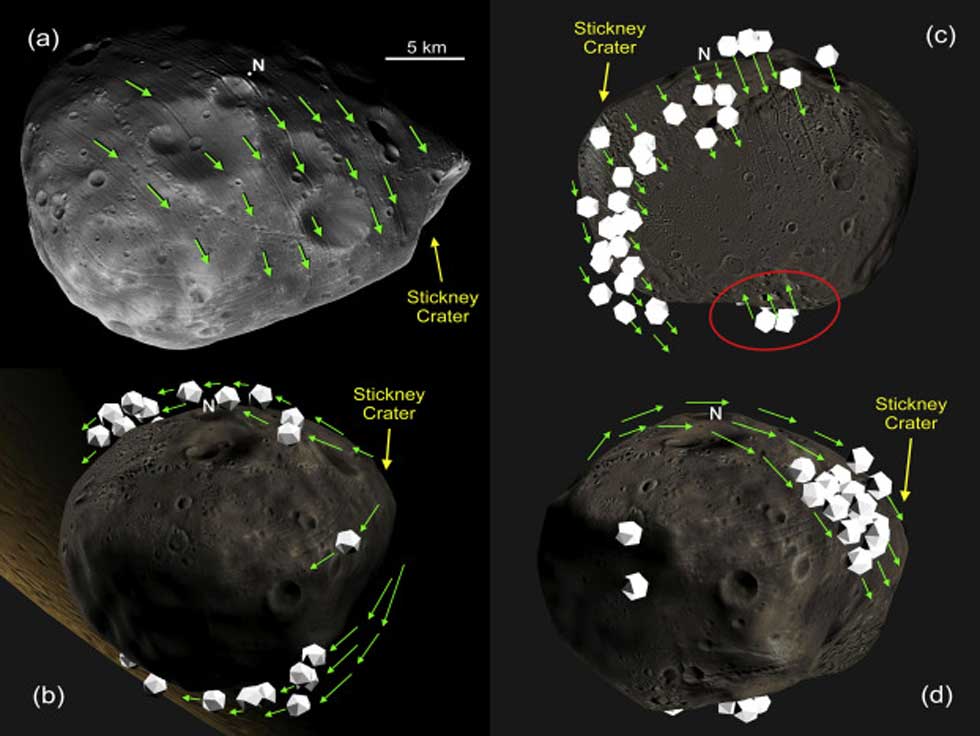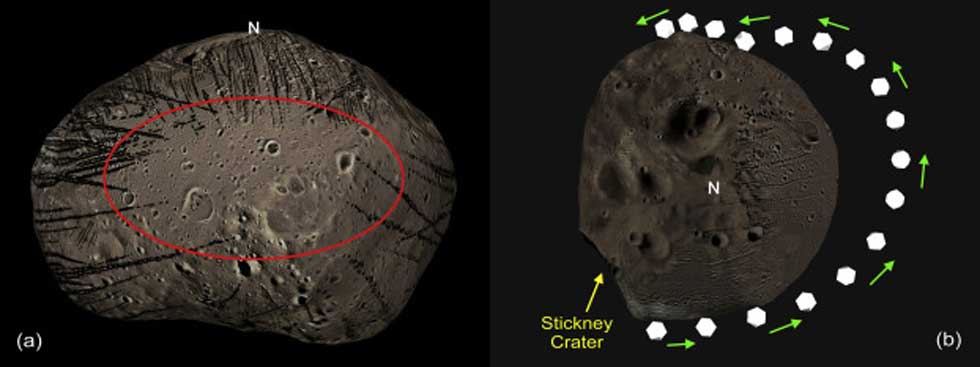Phobos' Grooved Appearance Likely Caused By Rolling Boulders Find Computer Sims
One of the more interesting moons orbiting a planet in our solar system is Mars' moon Phobos. One of the key aspects of that moon is its odd shape and unique grooves that run across the surface of the moon in roughly the same direction. Brown University has developed computer models with the goal of determining what exactly caused the grooves on the moon's surface.
The computer sims looked at the movement of debris from Stickney crater, which is the massive crater on the end of the oblong surface of the moon. How precisely these grooves formed has been a topic of debate for 40 years says Brown University researcher Ken Ramsley. One theory had to do with a massive impact on Mars showering Phobos with debris.
Another theory is that Mars' gravity is tearing the moon apart and the grooves are signs of structural failure. Other scientists believe that the grooves are connected to the impact that caused the Stickney crater. This theory poses that bouncing, sliding, and rolling boulders from Stickney carved the grooves in the moon.
Phobos is a tiny moon at 27km across the widest point; the Stickney crater is gigantic comparatively at 9km across. The argument against this theory is that some of the grooves on Phobos don't align radially with the Stickney crater as might be expected.
Another argument against that theory is that there appear to be grooves created at two different times suggesting they may have been there before the crater formed. The computer models the researchers created were able to show that the rolling boulder theory could be correct as it showed grooves that look very much like the surface of Phobos. The simulation also gave an idea of what might have caused the grooves that are aligned differently. Essentially some of the boulders appeared to have rolled all the way around the moon due to low gravity and its small size.



